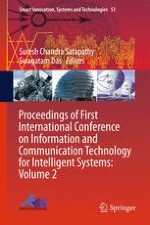This volume contains 60 papers presented at ICTIS 2015: International Conference on Information and Communication Technology for Intelligent Systems. The conference was held during 28th and 29th November, 2015, Ahmedabad, India and organized communally by Venus International College of Technology, Association of Computer Machinery, Ahmedabad Chapter and Supported by Computer Society of India Division IV – Communication and Division V – Education and Research. This volume contains papers mainly focused on ICT and its application for Intelligent Computing, Cloud Storage, Data Mining, Image Processing and Software Analysis etc.
